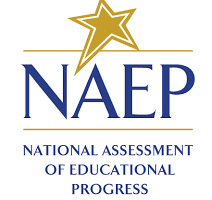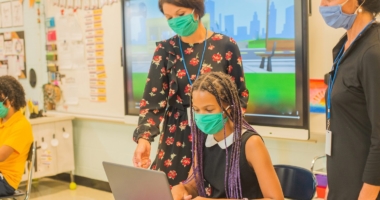Why Schools Should Consider Online Coaching for Teachers
“Rrrr – aaaa – t.” A five-year-old boy on my computer screen looked up at his teacher quizzically. He was unsure of what the word was, so his teacher patiently modeled how to blend the sounds together.
This was an interaction I witnessed regularly from 2012-13, when I worked as an instructional coach with a dozen kindergarten and first grade teachers in high-poverty, rural elementary schools in North Carolina. I met with the teachers twice a week, where I watched their one-on-one sessions with emerging readers and provided real-time feedback. I led weekly grade-level meetings to problem-solve issues and to review instructional strategies. And I did it all online.
Now, while schools are shuttered in response to COVID-19 and have transitioned to distance learning, I think about how to make sure that teachers get the professional development and mentoring they need. Schools, especially those that serve large percentages of students experiencing poverty, may struggle to adapt teaching practices to online learning; vet and deploy new tools; and identify and meet students’ varying needs during this time, so it is important for state and district leaders to put in place structures that support teachers.
One of the best ways to provide that support is coaching, which can significantly improve teachers’ instructional quality and boost student achievement. Instructional coaching can be much more effective than the traditional “workshop” model, which often doesn’t lead to meaningful changes in teacher practice. And research shows that coaching doesn’t have to be in-person to work. The initiative with which I was a virtual reading coach, for example, was shown to be effective and even meets the Every Student Succeeds Act’s highest standard for evidence. Studies have shown a positive impact of virtual coaching on teachers’ instructional quality in math, as well. There are additional benefits of virtual coaching models, which allow instructional coaches to work with a larger number of teachers and make it easier to match teachers with coaches who have expertise in their content area and grade level. This is excellent news, given that schools may continue to be closed for part of the next school year, and state and district leaders will need to come up with new ways to continue to support and develop their educators.
States, districts, and schools with existing coaching models can work to move coaching online. For example, The Barbara Bush Middle School in Irving, Texas was able to transition to web-based coaching when schools closed, partially due to the strong teacher-coach relationships they built prior to the COVID-19 outbreak. And the North Carolina New Teacher Support Program has continued to provide support to beginning teachers across the state through web-based coaching. But it’s not too late for places without instructional coaching models in place. Research shows that web-based coaching can be operated at relatively low costs and be scaled up fairly easily. The Kentucky Department of Education, which recently launched an initiative for experienced educators to provide virtual support to other educators who are navigating the new reality of teaching online during school closures, is a promising example.
Supporting teachers has always been important, but the need is so much more urgent now. By some estimates, students will have lost 30% to a full school year of learning gains while schools were closed, and according to our recent surveys, parents of color and parents in low-income households are even more likely to say they’re worried about their child falling behind academically. Teachers — especially those working with the students who are furthest behind or most deeply impacted by the pandemic — will need support to transition to new ways of teaching, to catch students up, and to meet students’ social-emotional needs given the increased stress and anxiety that many children and families are experiencing. Given the strong evidence base behind coaching and the ability to move coaching online, it’s a strategy that many states, districts, and schools should consider.










